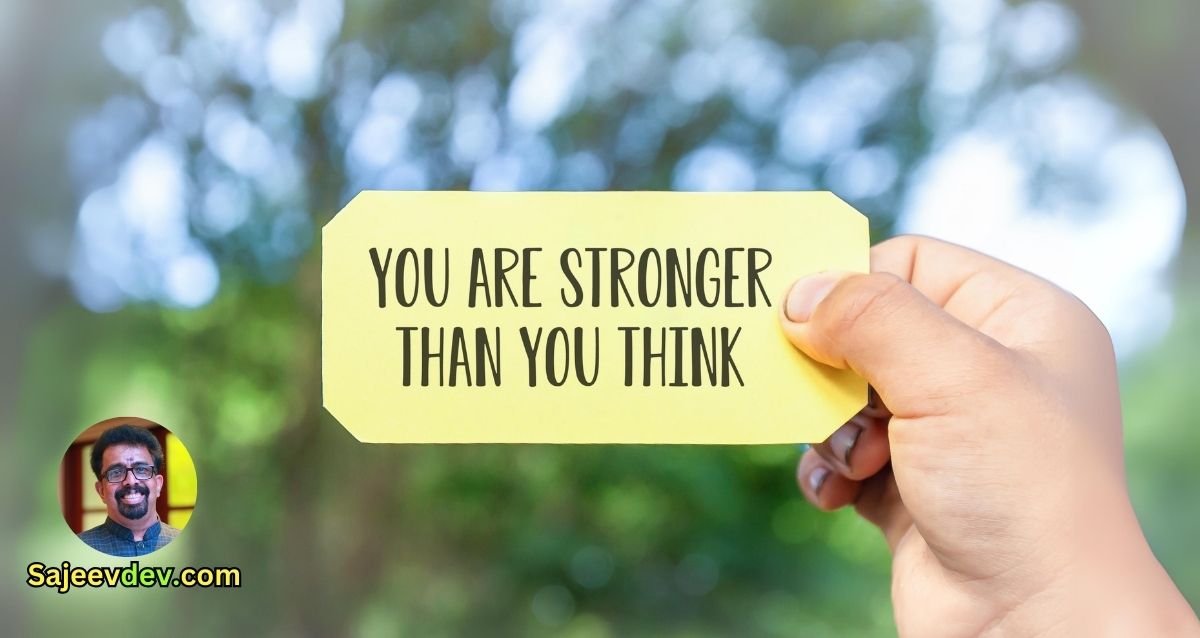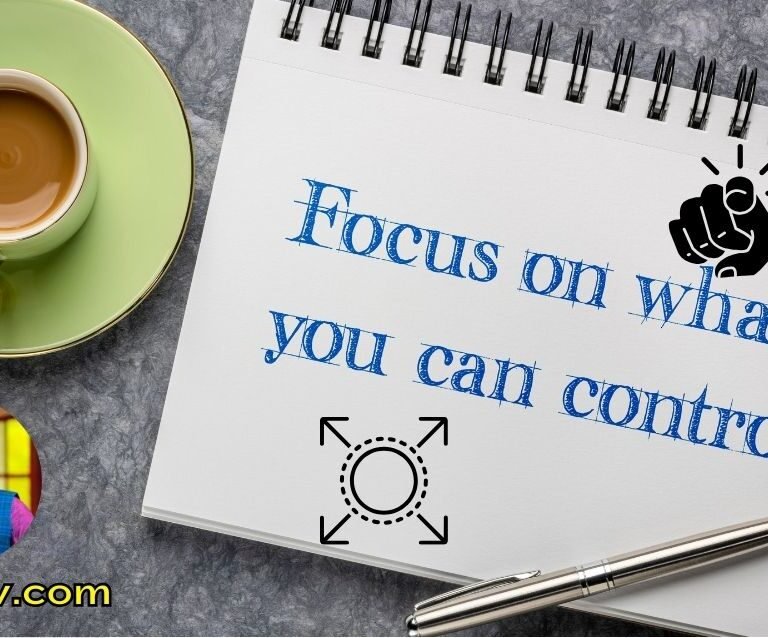The Power of Inner Strength
Inner strength is a vital, yet often underestimated, aspect of our lives. It is the mental and emotional fortitude that enables individuals to navigate through life’s myriad challenges. Recognizing and harnessing this strength can be a transformative experience, empowering us to face adversities with resilience and confidence. The concept of inner strength transcends mere physical capability, delving into the rich tapestry of our psychological and emotional resources.
In times of hardship, it is our inner strength that often determines our ability to persevere. Whether dealing with personal loss, professional setbacks, or any form of adversity, tapping into this well of inner resilience can make all the difference. It acts as a guiding force that helps us maintain equilibrium and continue moving forward, even when the odds seem insurmountable.
This article aims to delve into the multifaceted nature of inner strength and its profound significance in our daily lives. We will explore practical strategies to recognize and cultivate this hidden potential within ourselves. By understanding the various dimensions of inner strength, from mental toughness to emotional resilience, we can better equip ourselves to handle life’s inevitable challenges.
Throughout this journey, we will also examine real-life examples and expert insights to illustrate how individuals have successfully tapped into their inner reservoirs of strength. The goal is to provide readers with actionable tools and insights that can be applied to their own lives, fostering a deeper sense of self-awareness and empowerment. Ultimately, this exploration is about uncovering the latent power within each of us, proving that we are indeed stronger than we often realize.
Understanding Inner Strength
Inner strength is a multifaceted concept that goes beyond mere physical prowess. While physical strength is tangible and can be measured through feats of endurance and power, inner strength is an intangible quality rooted deeply in our psychological and emotional makeup. It encompasses attributes such as resilience, perseverance, and self-belief, which collectively empower individuals to navigate life’s challenges with grace and determination.
Resilience, a key component of inner strength, refers to the ability to bounce back from setbacks and adversities. It is the mental fortitude that allows individuals to recover from difficult situations and continue moving forward. For instance, consider someone who loses their job unexpectedly. While the initial reaction may be one of disappointment and frustration, a resilient person will quickly shift their focus to finding new opportunities, leveraging their skills and networks to rebuild their career.
Perseverance, another crucial aspect of inner strength, involves sustained effort and determination in the face of obstacles. This quality is evident in individuals who pursue their goals relentlessly, regardless of the difficulties they encounter. Take, for example, a student who dreams of becoming a doctor. Despite facing numerous academic challenges and personal sacrifices, their unwavering commitment to their goal propels them to work harder, study longer, and overcome every hurdle in their path.
Self-belief, the third pillar of inner strength, is the confidence in one’s abilities and worth. It is this inner conviction that fuels a person’s ambition and drives them to take risks and seize opportunities. A notable example of self-belief is seen in entrepreneurs who, despite the uncertainty and potential for failure, embark on their ventures with the firm belief that they can succeed. This inner assurance provides the motivation to persist even when the odds seem insurmountable.
In everyday life, inner strength manifests in countless ways. It is the single parent who juggles multiple responsibilities to provide for their children, the athlete who trains tirelessly despite injuries, and the artist who continues to create despite criticism. These examples highlight how inner strength is an essential and powerful force that enables individuals to endure, adapt, and thrive in the face of life’s myriad challenges.
The Science Behind Inner Strength
Inner strength, often perceived as an abstract quality, has substantial psychological and biological underpinnings. The concept of inner strength is closely related to resilience, defined as the ability to adapt positively in the face of adversity. Scientific research in psychology and neuroscience offers significant insights into the mechanisms that contribute to this resilience.
One of the key areas of research is the brain’s role in resilience. Studies have shown that specific brain regions, such as the prefrontal cortex and the amygdala, play crucial roles in how we process and respond to stress. The prefrontal cortex, responsible for executive functions like decision-making and problem-solving, helps in regulating emotional responses. Conversely, the amygdala, which processes emotions such as fear and pleasure, can trigger stress responses. The interplay between these regions is essential in determining an individual’s resilience.
Biologically, the hypothalamic-pituitary-adrenal (HPA) axis is critical in the stress response. When faced with a stressor, the HPA axis activates and releases cortisol, a hormone that helps the body manage stress. Research indicates that individuals with a well-regulated HPA axis tend to exhibit higher levels of resilience. Conversely, dysregulation in this system can lead to increased vulnerability to stress and reduced inner strength.
Psychologically, certain mindsets and cognitive styles can enhance inner strength. For example, a growth mindset, which involves viewing challenges as opportunities for growth, has been linked to higher resilience. Carol Dweck’s research highlights that individuals with a growth mindset are more likely to persist through difficulties, thereby enhancing their inner strength. Additionally, cognitive-behavioral approaches that emphasize positive thinking and emotional regulation can further bolster resilience.
Key studies supporting the concept of inner strength include the work of psychologist Martin Seligman on learned optimism, which emphasizes the power of positive thinking in overcoming adversity. Similarly, the research by George Bonanno on the resilience of individuals exposed to trauma underscores the variability in human responses to stress, suggesting that inner strength can be cultivated.
In summary, the science behind inner strength encompasses a complex interaction of psychological and biological factors. Understanding these mechanisms can help individuals harness their inner resources more effectively, fostering resilience and personal growth.
Recognizing Your Inner Strength
Identifying your inner strength begins with self-awareness, a crucial component in recognizing your resilience and fortitude. To start this journey, you can engage in practical exercises and reflective practices designed to unveil the strength within you. One effective method is through journaling, which offers a structured way to explore your thoughts and past experiences.
Begin by reflecting on challenging situations you have encountered. Ask yourself: What were the most difficult moments in my life? How did I manage to overcome them? What personal qualities did I rely on during these times? Write down your responses in a journal. This exercise not only allows you to see patterns in your resilience but also aids in recognizing the personal attributes that contributed to your strength.
Another practical tip is to create a “strengths inventory.” List out scenarios where you faced adversity and note the specific strengths you utilized. For example, consider a time when you had to adapt quickly to a new environment. Did you demonstrate flexibility, perseverance, or resourcefulness? Identifying these traits can help you realize the inner strength you possess.
To deepen your self-awareness, pose reflective questions such as: What do I consider my biggest achievements? What inner resources did I draw upon to accomplish these? How do I typically respond to stress and pressure? Answering these questions can illuminate your natural resilience and highlight your coping mechanisms.
Additionally, envision yourself in hypothetical challenging scenarios. Consider how you would manage a situation like losing a job or facing a significant personal setback. What steps would you take to navigate these difficulties? This mental rehearsal can reinforce your confidence in your ability to handle future challenges, thereby acknowledging your inherent strength.
Remember, recognizing your inner strength is an ongoing process. Consistent self-reflection and awareness can help you uncover and appreciate the resilience you may have previously overlooked. By acknowledging and valuing your past experiences and the strengths you exhibited, you pave the way for a stronger, more resilient future.
Building and Cultivating Inner Strength
Developing inner resilience is an ongoing process that requires intentional effort and consistent practice. One effective strategy is engaging in positive self-talk. This involves consciously replacing negative thoughts with affirming messages. For instance, instead of focusing on failures, remind yourself of past successes and strengths. Regularly affirming your capabilities can significantly enhance your mental resilience.
Mindfulness is another powerful technique for cultivating inner strength. Practicing mindfulness involves being present in the moment and observing your thoughts without judgment. Techniques such as meditation, deep breathing exercises, and mindful walking can help you stay grounded and reduce stress, fostering a stronger mental framework. Consistently practicing mindfulness can make it easier to navigate life’s challenges with a clear and focused mind.
Setting realistic goals is crucial in building inner strength. Establishing achievable objectives allows you to experience success regularly, which boosts your confidence and resilience. Break down larger goals into smaller, manageable tasks to avoid feeling overwhelmed. Celebrate your progress along the way, no matter how small, as this reinforces a positive mindset and encourages perseverance.
Seeking support from others is equally important in strengthening your inner resilience. Connecting with friends, family, or support groups can provide emotional encouragement and practical advice. Sharing your experiences and challenges with others fosters a sense of community and reduces feelings of isolation. Don’t hesitate to reach out for help when needed; recognizing that you are not alone in your struggles empowers you to tackle obstacles more effectively.
By integrating these strategies into your daily life, you can gradually build and cultivate your inner strength. The journey towards enhanced resilience is unique for everyone, but with patience and dedication, you can discover and harness the power of your inner fortitude.
Overcoming Self-Doubt and Fear
Self-doubt and fear are formidable barriers that often hinder individuals from recognizing and tapping into their inner strength. These mental obstacles can manifest in various ways, from a pervasive sense of inadequacy to an overwhelming fear of failure. To overcome these barriers, it is crucial to understand their root causes and develop strategies to challenge and dispel them.
Self-doubt typically stems from negative self-perceptions and past experiences that have shaped one’s beliefs about their capabilities. This can lead to a cycle of hesitation and inaction, where the fear of making mistakes or facing criticism overshadows the drive to pursue one’s goals. To break free from this cycle, it is essential to reframe these negative thoughts. Cognitive-behavioral techniques, such as identifying and challenging irrational beliefs, can be particularly effective. By replacing self-doubt with positive affirmations and realistic self-assessments, individuals can build a more empowering self-narrative.
Fear, on the other hand, often arises from uncertainty and the unknown. It is a natural response that can, if unchecked, paralyze decision-making and stifle growth. Confronting fear requires a proactive approach: setting small, achievable goals can help build confidence and provide tangible evidence of one’s capabilities. Additionally, mindfulness practices, such as meditation and deep-breathing exercises, can reduce anxiety and promote a calm, focused mindset.
Real-life examples illustrate the power of overcoming these mental barriers. Consider the story of J.K. Rowling, who faced numerous rejections before achieving literary success with the Harry Potter series. Her perseverance in the face of self-doubt and fear of failure is a testament to the resilience of the human spirit. Similarly, Oprah Winfrey’s journey from a troubled childhood to becoming a media mogul underscores the importance of inner strength and self-belief in achieving one’s aspirations.
Ultimately, recognizing and harnessing inner strength involves confronting and overcoming self-doubt and fear. Through sustained effort and the application of effective strategies, individuals can break free from these constraints and unlock their true potential.
Real-Life Examples of Inner Strength
In the journey to discovering our inner strength, real-life examples often serve as powerful sources of inspiration. These stories, drawn from diverse backgrounds and circumstances, illustrate the remarkable resilience and fortitude individuals can exhibit when faced with adversity.
Consider the story of Malala Yousafzai, a Pakistani activist for female education. Her journey began in a region where girls were often denied the opportunity to attend school. Despite facing life-threatening danger, Malala advocated for education, even after surviving a targeted attack by the Taliban. Her unwavering commitment to her cause and her ability to transform personal trauma into a global movement for education highlights the profound inner strength she possesses. Malala’s story teaches us the importance of standing firm in our beliefs, even in the face of extreme adversity.
Another compelling example is that of Nelson Mandela. Spending 27 years in prison for his fight against apartheid in South Africa, Mandela emerged without bitterness, advocating for reconciliation and unity. His capacity to forgive and his vision for a unified nation demonstrate an extraordinary level of inner strength. Mandela’s experiences remind us that true strength lies not just in enduring hardship but in the ability to maintain one’s principles and foster positive change despite it.
Closer to daily life, consider the story of Bethany Hamilton, a professional surfer who lost her arm in a shark attack. Rather than succumbing to despair, Hamilton returned to surfing just a month after the incident and went on to win national championships. Her resilience and determination to pursue her passion, despite physical limitations, underscore the power of a strong, indomitable spirit. Bethany’s journey encourages us to recognize our potential and to keep pushing forward, even when faced with seemingly insurmountable obstacles.
These stories of Malala Yousafzai, Nelson Mandela, and Bethany Hamilton offer tangible lessons in inner strength. They remind us that resilience, forgiveness, and determination are not just abstract concepts but qualities that can be cultivated and applied to our own lives. By learning from such examples, we can discover and harness our own inner strength, enabling us to navigate the challenges we encounter with grace and fortitude.
Your Inner Strength
Throughout this article, we have explored the various facets of inner strength and how it manifests in different situations. We delved into the importance of self-awareness, resilience, and the ability to adapt to challenges. Each of these components contributes to the realization that we all possess a reservoir of strength within us, waiting to be harnessed.
The journey of discovering your inner strength begins with self-reflection. By understanding your values, beliefs, and motivations, you lay the foundation for personal growth. Resilience, too, plays a critical role, as it enables you to bounce back from setbacks and turn obstacles into opportunities. Adaptability ensures that you can navigate the ever-changing landscape of life with grace and confidence.
It is essential to recognize that inner strength is not a fixed trait but a dynamic quality that can be cultivated and developed over time. Each challenge you face and overcome adds to your reservoir of strength, making you more capable and confident in your abilities. This journey of self-discovery and personal growth is ongoing and requires a commitment to continuous learning and self-improvement.
As you continue on this path, remember that you are stronger than you think. Embrace the challenges that come your way, knowing that each one is an opportunity to grow and become stronger. Believe in your potential and trust that you have the inner strength to overcome any adversity. Let this belief drive you forward, inspiring you to achieve your goals and live a fulfilling life.
In closing, take a moment to reflect on the inner strength you have already demonstrated in your life. Celebrate your accomplishments and use them as a reminder of your resilience and capability. Continue to nurture and develop your inner strength, and let it guide you toward a future filled with possibility and empowerment.









